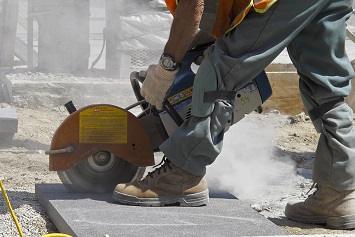OSHA is requesting information about possible revisions to three of its standards for respirable crystalline silica exposure. The agency’s request for information (RFI) appeared in the August 15 Federal Register (FR) (84 FR 41667).
OSHA is considering whether to add engineering and work practice controls not currently listed in a table in its construction industry standard. The agency also is considering changes to the general industry and maritime standards to allow for additional circumstances when the construction standard would apply.
Submissions in response to the RFI are due October 15.
OSHA wants information about any effective engineering or work practice controls not currently listed for the tasks included in Table 1 of the construction standard.
The agency is also seeking information about specific control methods for the following equipment and tasks not currently included in Table 1:
- Mixing of dry materials containing crystalline silica, such as drywall compound, exterior insulation, finishing system base and finish coats, fireproofing, mortar, and plaster;
- Application of shake, such as coloring and/or texturizing material on poured concrete floors;
- Use of chain saws to cut silica-containing materials;
- Use of powered sweepers—trucks equipped with rotating brushes to clean surfaces;
- Application of dry-mix or wet-mix shotcrete;
- Drywall finishing—OSHA did not originally include drywall finishing in Table 1 because drywall compounds containing silica only as a trace contaminant were expected to result in low exposures, but some drywall finishing compounds may have higher or unknown silica content;
- Demolition of silica-containing materials using manual tools, such as a chisel, mason hammer, pry bar, or sledgehammer; and
- Any other equipment or tasks stakeholders believe should be included in Table 1.
Applying Construction Standard
OSHA established three safety and health standards for respirable crystalline silica exposure—for construction, general industry, and maritime. However, the general industry and maritime standards are identical. Maritime refers to longshoring, marine terminals, and shipyards.
The general industry and maritime standards allow employers to follow the construction standard when:
- The task performed is indistinguishable from a construction task listed on Table 1; and
- The task will not be performed regularly in the same environment and conditions.
OSHA wants to know whether stakeholders believe there are other activities or situations where the construction standard should apply in general industry and maritime workplaces.
On March 25, 2016, OSHA published a final rule amending its standards for occupational exposure to respirable crystalline silica. The final rule set a new permissible exposure limit (PEL) for respirable crystalline silica of 50 micrograms per cubic meter of air (50 µg/m3) as an 8-hour time-weighted average in all industries.
The rule also established other provisions, such as requirements for exposure assessment, hazard communication, medical surveillance, methods for controlling exposure, respiratory protection, and recordkeeping.
The construction standard offered employers two options for compliance: They could (1) assess each employee’s exposure and implement controls to reduce exposure to the PEL, or (2) implement the engineering and work practice controls for the equipment and tasks listed in Table 1.

